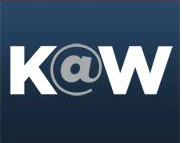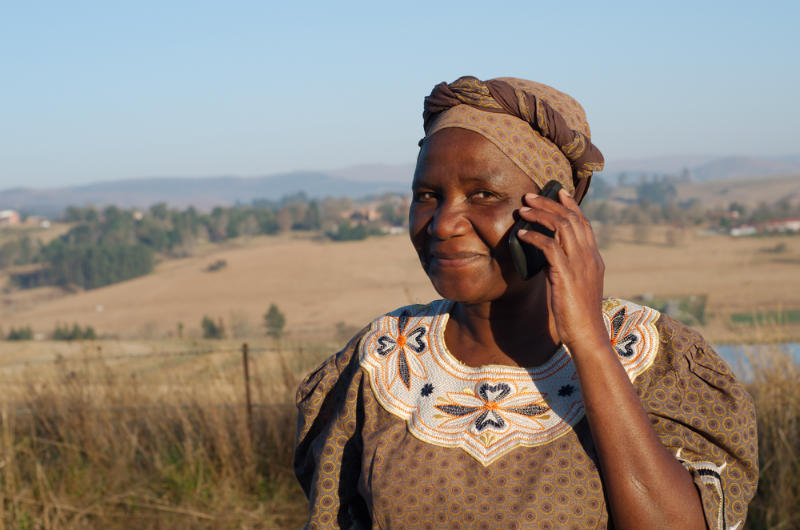For-profit, nonprofit, impact investing: Which works best? Three social entrepreneurs in Africa share their very different approaches.
Social entrepreneurship is on the rise. Sixty percent of all social enterprises today were founded only within the past eight years, according to Harvard Business Review. There are many passionate, energetic people willing to roll up their sleeves to help rid the world of poverty, hunger, joblessness, lack of water and proper sanitation, and other enormous problems. Yet often their efforts fall by the wayside, usually due to a lack of sufficient funding.
What’s the best model for success: a for-profit with a charitable mission? Social impact investing? A traditional philanthropic foundation? And once your organization is up and running, how do you ensure its long-term survival?
At the recent Wharton Africa Business Forum, three social entrepreneurs described their various financing approaches and the issues they are tackling on the African continent: from protecting children from serious water-borne illnesses, to providing families with alternatives to dangerous kerosene lamps, to training unconventional candidates for software jobs.
The Nonprofit Entrepreneur
For Saran Kaba Jones, the social entrepreneurship journey is a personal one that arose “from the ashes of civil war.” She was born in Liberia but fled with her family at age 8, shortly before that country’s long and bloody civil war started in 1989. “Millions of people were displaced from their homes, infrastructure was destroyed and the very fabric of society was torn apart,” said Jones. She returned to Liberia in 2008 with the aim of helping to “rebuild … one piece at a time.”
Jones is the founder and CEO of FACE Africa, a nonprofit organization working to improve access to safe drinking water and sanitation in Liberia. She explained that she initially intended to focus her efforts on education (FACE actually stands for “Fund a Child’s Education”), but quickly realized that to get children to attend school at all, enabling access to clean water was job one. “Children were not showing up to schools for long periods because of water-borne illnesses like diarrhea and typhoid.” She added that according to the World Bank, water-related diseases kill more African children under five than HIV/AIDS, malaria and measles combined.
The water problem has an economic impact as well, according to Jones. “Women in Africa spend 60% of their day walking to fetch water, and the continent loses 40 billion potential work hours every single year collecting water.” With clean water located close by, women could take on other kinds of work and improve their families’ quality of life.
Since its inception in 2009, FACE Africa has completed 50 community water projects impacting 25,000 people in 35 communities in Liberia. Jones said her goal is to provide 100% water access to one region in Liberia so that the successful model could be replicated in other parts of the country and continent.
Although FACE Africa has raised more than $600,000 from organizations including JP Morgan Chase, Coca-Cola and P&G, it continues to struggle. For the past two or three years, the organization has hovered in the “valley of death,” Jones said, borrowing a term from commercial startups that refers to the period before a company begins generating revenue. “You’re at the stage where you’re not quite a startup, but you need an infusion of funding and resources in order to pivot to that next level.” She called the experience “the most difficult and frustrating point in any nonprofit or social enterprise’s life.”
Jones noted that “good old-fashioned philanthropy” of the kind practiced by FACE Africa tends to be discounted these days. “Every solution now has to be market-based, and there’s this pressure for nonprofits … to create, market and sell products and services to the poor.” But in Jones’ view, when it comes to providing basic social services to “some of the most marginalized populations … services that should by right be provided by government but are not,” a for-profit answer is often not enough.
The For-Profit Entrepreneur with a Social Mission
Jones’ fellow panelist, Adam Frankel, described a market-based approach to a particular social problem. Frankel, formerly a speechwriter for President Barack Obama, was until recently the CMO of Andela, a venture-backed, for-profit startup that has received coverage in major media including Forbes, Inc., Wired, The New Yorker and CNN. Andela identifies talented individuals from all over Africa and trains them to become software engineers.
Frankel, now senior director of CEO communications at PepsiCo, called Andela a self-funding model of education. “What if you could fund the training through the client work that folks get after completing their training? That’s essentially the idea of Andela.”
Frankel explained the statistics behind Andela’s business concept: In the US, there are more openings for tech jobs than there are trained software developers in the country. Other Western nations are short of software developers, too. Meanwhile, he said that Africa has about 25% unemployment, even higher underemployment in many areas, and a population of which about 60% is under the age of 35. “In our view, Africa is the world’s largest source of unrealized human potential. What we’re about is tapping into that talent and connecting them to a global marketplace.”
Across much of Africa, families with no access to electricity use kerosene to light their homes. Yet inhaling the fumes from one kerosene lamp has been likened to smoking 40 cigarettes a day.
Frankel said that most of the people who come into the program have some technical background—for example, a graduate degree from an African university in science, electrical engineering or chemical engineering—but are not necessarily working as software developers. After a rigorous application process, those selected are enrolled in a four-year program at an Andela campus in Nigeria or Kenya. For the first six months, they are intensively trained in software development and in general business “soft skills,” and then begin working remotely for companies around the world. Andela’s clients include Microsoft and a number of smaller companies in energy, financial services, executive education, social media and entertainment.
Andela students graduate with a bank account that the organization helps them create, and with the potential to join top companies or start their own firms, said Frankel. “Rather than charging a tuition to learn and ending up in debt like many Americans [who go to college], we’re actually paying people to learn and they graduate with savings.”
How does Andela measure success? “We’ve proven we can find that top-level talent, train people up, and have them deployed to companies that are excited about their services, excited to have them as members of the team, and are asking for additional [personnel].”
The Social Impact Investor
Across much of Africa, families with no access to electricity use kerosene to light their homes. Yet inhaling the fumes from one kerosene lamp has been likened to smoking 40 cigarettes a day. Indoor smoke causes about 400,000 deaths a year in Sub-Saharan Africa, according to the Financial Times.
In addition to the major health risks, kerosene—and the battery-powered flashlights that some people use—is expensive, said Lauren Cochran. Cochran is the director of private investments at Blue Haven Initiative, a private single-family office investing in small and medium-sized enterprises in East Africa. “There are 1.4 billion people in the world that live off the grid … that’s almost 20% of the world’s population. Those people spend $30 billion a year on average on kerosene and batteries.”
One of Cochran’s investment priorities is finding companies that offer renewable energy options. She talked about Blue Haven’s investment in M-Kopa Solar, a Nairobi-based solar equipment supplier. M-Kopa’s business model was inspired by the growing popularity of mobile phones and mobile payment systems in Africa. “What they started with was the idea that you could put a SIM card into a battery and enable people to pay for whatever that battery was powering … The original system was three solar lights and phone charging. They’ve now iterated a bit, and the system includes a radio, and they’re just moving into other things.”
The system costs about $175, but M-Kopa gives it to customers for a $30 deposit and allows them to pay a little every day over a year (365 daily mobile payments of 50 cents) to own the system outright. If customers don’t pay, the system can be shut down remotely from the company’s offices. Cochran called this pay-as-you-go model “pretty innovative” (in fact, it has engendered other companies with similar offerings). She noted that the arrangement provides consumer financing for people with no credit score or access to a credit card.
Cochran described some of the reasons Blue Haven chose to invest in M-Kopa rather than another renewable energy company. One was M-Kopa’s willingness to pilot and innovate. For example, the company experimented with how much background checking was actually necessary to predict customers’ financial reliability. They also innovated in logistics, finding the fastest, cheapest way to deliver their systems.
Their customer service is a strength as well, in Cochran’s view. She said that M-Kopa’s 700 representatives across three countries “speak an unknown number of dialects” and are focused on answering questions as quickly as possible. “When you are asking people to transition from kerosene, they know the guy that sells them kerosene, they know it works, even if it’s dirty and dangerous. You have to engender trust in your customers.” According to Cochran, M-Kopa now has about 250,000 homes on its system, and boasts a repayment rate of 95% within 12 to 14 months of customers’ initial purchase.
 Cochran stressed the importance to Blue Haven of making investments that are both socially impactful and financially successful, emphasizing that the organization is not a foundation. “The family has decided that they want to dedicate 100% of their assets into investments that are aligned with their values … This is the money that they live off of.”
Cochran stressed the importance to Blue Haven of making investments that are both socially impactful and financially successful, emphasizing that the organization is not a foundation. “The family has decided that they want to dedicate 100% of their assets into investments that are aligned with their values … This is the money that they live off of.”
The panelists agreed that no organizational model for solving social problems was equally effective in every situation. Jones said that she believes in a collective approach. “Government has a role to play, the private sector has a role to play, and certainly philanthropy and traditional nonprofits have a role to play.”
Cochran was asked if she ever felt pressure to lessen the social impact angle to achieve a commercial return. She acknowledged that a growing company like M-Kopa might begin to set its sights on higher-income customers, as it has started to expand into selling TVs and energy-efficient appliances. “But if you build a solution that works across the socioeconomic spectrum, that’s OK,” she said. “If you’re serving 250,000 people to start, and over the course of time you serve a million, even if 50% of those people are the low-income folks you started out trying to sell to, that’s still more than a lot of [social enterprises achieve].”
*[This article was originally published by Knowledge@Wharton, a partner institution of Fair Observer.]
The views expressed in this article are the author’s own and do not necessarily reflect Fair Observer’s editorial policy.
Photo Credit: Jacob Lund / Photo Africa / Samuel Borges Photography / Shutterstock.com
 We bring you perspectives from around the world. Help us to inform and educate. Your donation is tax-deductible. Join over 400 people to become a donor or you could choose to be a sponsor.
We bring you perspectives from around the world. Help us to inform and educate. Your donation is tax-deductible. Join over 400 people to become a donor or you could choose to be a sponsor.
Support Fair Observer
We rely on your support for our independence, diversity and quality.
For more than 10 years, Fair Observer has been free, fair and independent. No billionaire owns us, no advertisers control us. We are a reader-supported nonprofit. Unlike many other publications, we keep our content free for readers regardless of where they live or whether they can afford to pay. We have no paywalls and no ads.
In the post-truth era of fake news, echo chambers and filter bubbles, we publish a plurality of perspectives from around the world. Anyone can publish with us, but everyone goes through a rigorous editorial process. So, you get fact-checked, well-reasoned content instead of noise.
We publish 2,500+ voices from 90+ countries. We also conduct education and training programs
on subjects ranging from digital media and journalism to writing and critical thinking. This
doesn’t come cheap. Servers, editors, trainers and web developers cost
money.
Please consider supporting us on a regular basis as a recurring donor or a
sustaining member.
Will you support FO’s journalism?
We rely on your support for our independence, diversity and quality.








